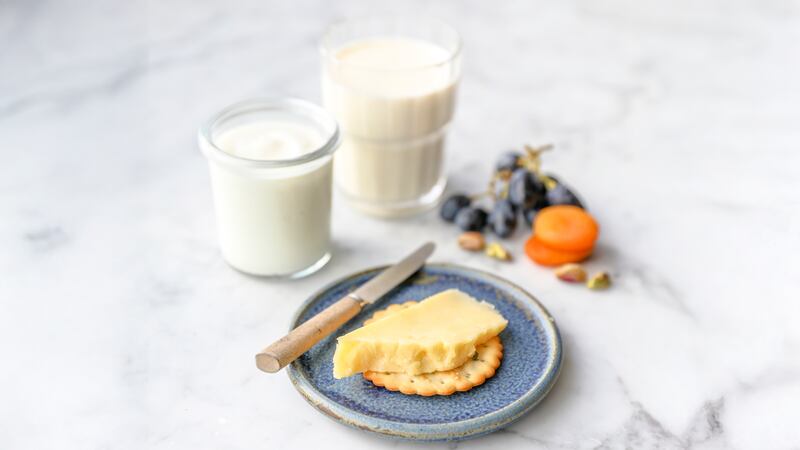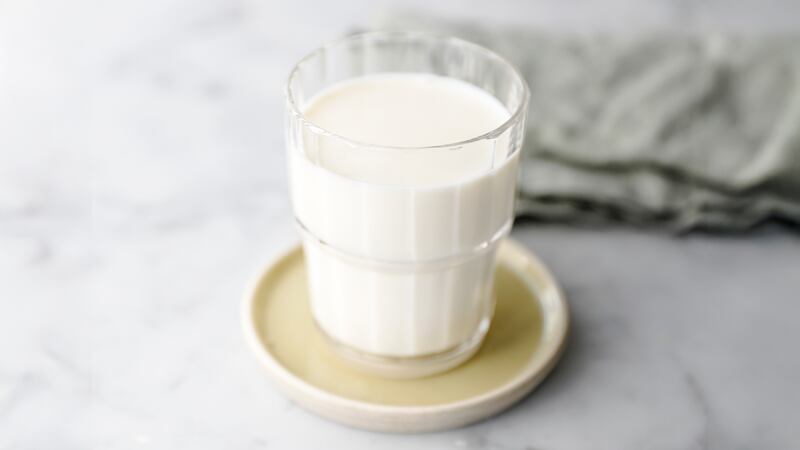Milk delivers invaluable nutrients that are hard to replace with any other single alternative source, advises Dr Mary Harrington, senior nutritionist with the National Dairy Council.
A graduate of UCC who spent many years working in Australia, Dr Mary Harrington is a registered public health nutritionist.
In her current role, she is dedicated to communicating the latest scientific research in relation to the health and nutrition benefits of Ireland’s dairy products.
Very often, that starts with breaking down some misperceptions, including overarching fears that dairy is fattening and dairy farming unsustainable. Neither is true, she points out.
RM Block

Get the facts on fats
“Yes, dairy foods contain fat. But whether or not dairy is fattening depends on how much of it you eat,” she explains.
The same goes for all sorts of healthy foods, from avocados to nuts.
Whether or not a food is fattening comes down to serving size, how often you eat it and how balanced your diet is overall, as well as how active or sedentary your lifestyle is, she adds.
With milk now available in a range of options, from full- to low-fat, consumers have a greater degree of choice than ever before, allowing them to enjoy dairy products in the way that best suits them.
“I sometimes think that when people think of ‘full-fat’ milk, they think that means it’s full of fat, it’s not,” she smiles.
In fact, Irish milk is around 87 per cent water. The majority of the remaining part is made up of macronutrients such as protein, carbohydrate and fat, plus a wide range of vitamins and minerals, including riboflavin, vitamin B12, calcium, iodine, potassium, phosphorus and pantothenic acid.
The fat content is standardised at just 3.5 per cent for whole milk, falling to 0.5 per cent for skimmed or low-fat milk.
The fact that dairy is such a concentrated source of goodness is why the Department of Health’s food pyramid recommends we eat three servings a day from the milk, yoghurt and cheese food group, as part of a healthy, balanced diet.
Dairy products are an important source of calcium, a mineral that contributes to healthy bones and teeth.
Be aware, some dairy products are higher in fat, such as butter and cream, which are not on the dairy shelf in the Department of Health’s recommended food pyramid at all. “These are higher in fat and calories, so they’re the ones you should watch and use more sparingly,” she explains.

Harness the power of the matrix
Whole foods like milk are a mix of nutrients, minerals and compounds, which is known as a ‘food matrix’.
Put simply, this matrix effect explains the way whole foods act in our body, is different to the way in which their individual nutrient parts would act alone.
It’s why saturated fats, which are known to raise the level of bad cholesterol in the blood, may not always have the same effect on cholesterol when eaten as part of dairy foods.
Indeed, whole milk contains over 400 unique fatty acids, not just saturated fats, all working in concert together in a way that research suggests makes them even more effective than individual nutrients working in isolation.
The eight key components of milk — iodine, phosphorus, calcium, protein, potassium and vitamins B2, B12 and B5 — work in synergy to support the normal functioning of many of our body’s processes.
“So while a glass of milk contains fat, it also contains all of these other nutrients as well, all of which interact together and have their own interactions on the body, and there is a growing body of research emerging which suggests we should focus on health effects of foods and not just nutrients,” she explains.
“Given that fat is high in calories, however, the dietary guidelines still advise people to choose low-fat dairy products.”

A sustainable source of nutrition
In a world of ‘Frankenfoods’ and ultra-processed products, milk stands out for being pure, natural and locally sourced.
“Irish people know they can have milk from their local creamery, and that it is an affordable and nutritious product. If you think of the cost of a glass of milk, and the nutrient density you are getting out of it, it’s pretty good value. But if you take milk out of the equation and try to source that same matrix of nutrients in some other way, it’s actually very difficult to replace,” she points out.
Certainly, no calcium supplement can match the nutrient mix in a glass of milk. “It’s all about bioavailability, which is the amount of calcium that your body can absorb. We know from studies that the calcium in a glass of milk is highly bioavailable. We can’t always be as sure about supplements or fortified foods,” she explains.
Milk trumps non-dairy alternatives for bioavailability too, few of which have as much protein or calcium in them, and they do not naturally contain essential nutrients like Vitamin B12.
Research from Safefood, the all-island agency set up to promote knowledge of food safety and nutrition, shows plant-based non-dairy alternatives don’t have the same protein content as dairy products, and that alternative cheese products don’t have the same calcium content. It also found that milk and yoghurt alternatives can be sweetened.
Milk alternatives are also more processed than natural cow’s milk, have more food miles attached, and are usually more expensive.
“People choose non-dairy alternatives for a variety of reasons, but just have your eyes open to what you are getting in terms of nutritional quality, and what you are missing out on, including the dairy matrix effect. Yes, alternatives are usually fortified with added nutrients, but we don’t know how well the nutrients are absorbed and used by the body,” she says.
Be aware too that milk alternatives often have negligible amounts of iodine, which is found naturally in cow’s milk and is essential for health. “Iodine is important, especially for pregnant women. A single 200ml glass of cow’s milk provides just under half our daily recommended iodine intake. Iodine contributes to normal cognition function and growth in childhood,” she explains.
Local hero, low food miles
Ireland has long been blessed with a geography and climate that enables it to be a world-class producer of milk.
For some time now dairy farmers have been working on a variety of actions to reduce their environmental impact, using new science and technology.
“They are committed to becoming more sustainable through a range of means, including putting more clover into the ground to reduce the need for chemical fertiliser,” explains Dr Harrington.
“We also have one of the most efficient dairy production systems in the world because the majority of our cows are outdoors eating grass for up to 300 days a year. We have the right weather with lots of rain, ideal for growing grass to feed cows,” she says. Becoming more sustainable is now urgently beholden on all of us. She believes one of the biggest steps any of us can take to eat more sustainably is to adhere to the recommendations of the Department of Health’s Food Pyramid.
“The research shows that if we stuck to our dietary guidelines, we would reduce our carbon emissions as consumers. That’s because we are eating too many of the foods and drinks high in fat, sugar and salt, at the top of the food pyramid, and we are falling short of the recommendations on the nutrient-dense foods like fruits, vegetables and dairy,” she points out. “To be sustainable, we should start there.”




















